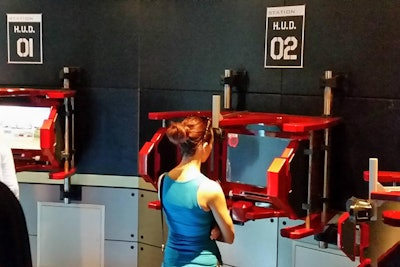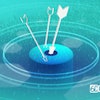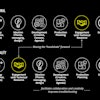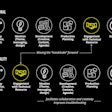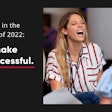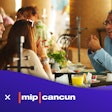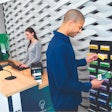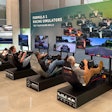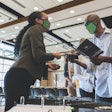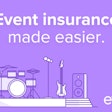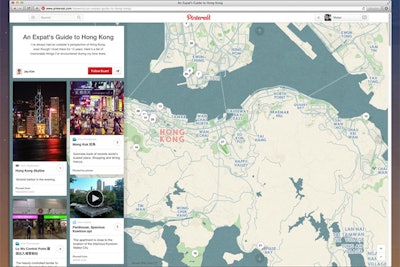
Map-based image boards from Pinterest allow planners to help attendees find restaurants, entertainment, and more. The Place Pins tool debuted in October and allows users to pin destinations on a map, with each pin including an image, address, phone number, and Web link. The boards make it easy to share destination information with people gathering for a meeting or conference. They can be embedded on the event’s Web site or shared via email and can also be accessed using Pinterest’s Android and iOS apps.
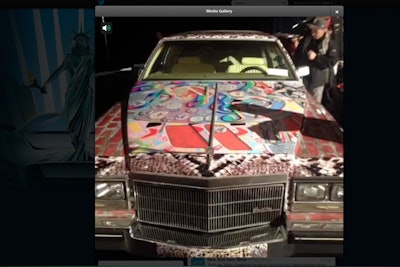
Twitter’s video-sharing app, Vine, has been adopted by both event planners and guests. Last spring, the New York International Auto Show invited the public to request videos of specific vehicles being unveiled during the show's press days. A team from Situation Interactive, the event’s digital marketing agency, created 73 Vine videos and shared them through the show’s Twitter and Facebook accounts, reaching 1.8 million people on Twitter alone. Brands are also using Vine to build buzz before trade shows and other events, and planners use it to show off their work and create inspiration for new clients.
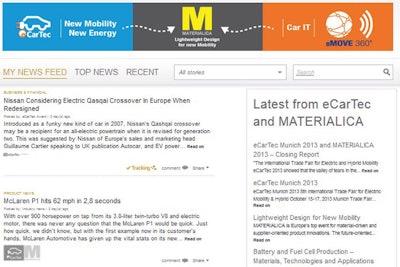
To help trade show and conference organizers keep attendees engaged year-round, ExpoBee has created Industry Tracker, which creates a personalized news feed based on a subscriber’s interests. The event organizer determines the sources of the site’s content—typically exhibitors, sponsors, and industry organizations. Industry Tracker then uses a proprietary algorithm to pull content from those Web sites, social media accounts, blogs, and other outlets, and then organizes that content into categories of “Top News” and “Recent News.” Users can create a more customized option, labeled “My News Feed,” by logging in with their Twitter, Facebook, or LinkedIn account and selecting specific topics and companies to track. ExpoBee provides tips and support to exhibitors on how to maximize their exposure. Users also have access to an online dashboard to see how many people are tracking, commenting on, and sharing their news. There's no charge to exhibitors to participate, but they can upgrade to a paid account to access contact information for site users. A portion of the revenue is shared with the event host.
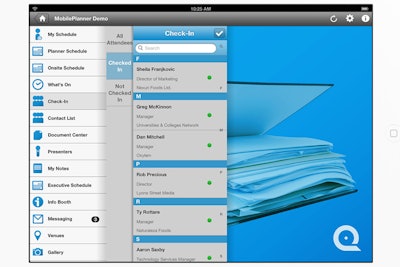
QuickMobile, a maker of mobile apps for meetings, conferences, and trade shows, created a product intended to help planners get their work done more efficiently. MobilePlanner debuted in mid-October and allows planners to manage documents, schedules, vendor contracts, exhibitors, attendees, speakers, and sponsors in one system that can be accessed on any device. Planners can manage multiple events simultaneously within the app and can allocate full or partial access to other team members. MobilePlanner can track progress and communication among everyone working on an event, and the organizers can also send push notifications for quick updates. At an event, the app indicates who has checked in and tracks details such has flight information, transportation, accommodations, and dietary needs.
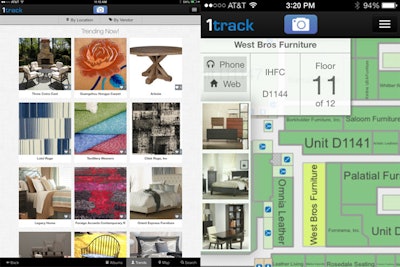
1Track is an app focused on facilitating buying and selling at trade shows. In the app’s “albums,” users store photos, notes, and Web links for products that interest them. The “trends” tab allows users to see a live stream of products being photographed by other attendees, with each photo linking to the exhibitor’s location on a show map. 1Track’s “map” section is integrated with Bluetooth Smart beacons to detect a user’s location on the show floor and suggest nearby exhibitors that offer products similar to what the user has already saved. As attendees use the app, the system captures data such as which booths and specific products drew the most interest and what was shared. After a show, attendees can access the photos and information they collected on the 1Track Web site. The app debuted at the furniture industry’s High Point Market in October.
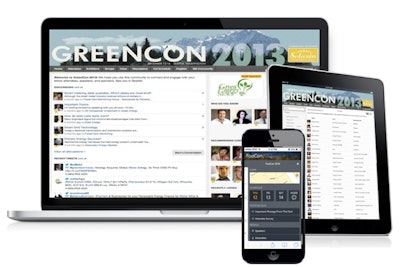
In November, Pathable updated its system to operate as a mobile Web app for offline usage, which allows attendees to access their agendas, appointments, messages, speaker handouts, and interactive floor plans even without Internet access. The system focuses on facilitating engagement and networking, so attendee profiles include searchable keyword tags that help people identify others to meet at the event. Exhibitors get a landing page with instructions on how to customize it with their logo, company information, videos, and more. For an additional charge, they can also see traffic volume on their profile pages and receive lead retrieval data.
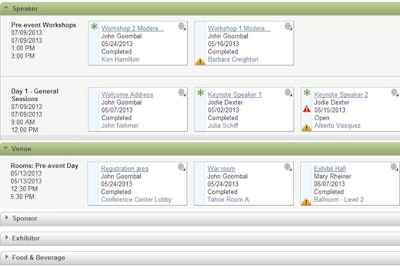
A former event marketing professional for German software company SAP is the creator of Goombal, an online system to add efficiency to corporate event planning. The system is set up with a dashboard organized with drop-down tabs where users input information related to speakers, venues, sponsors, exhibitors, entertainment, food and beverage, audiovisual needs, and other categories. Activity cards within each tab hold details related to each topic. Goombal automatically updates the event budget as expenses and revenue are added, and yellow and red triangles flag tasks that are incomplete or behind schedule. Every member of the event team can have system access (full or limited), and Goombal can also be used for communication with those outside the team, for example to contact speakers to request a bio or photo.
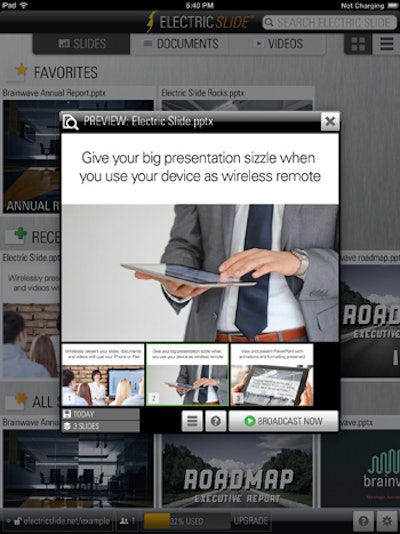
Electric Slide launched in February and allows speakers to share PowerPoint and Keynote slides, documents, and videos using an iPhone or iPad. The files can be displayed on any Web-enabled device, TV, or projector. The app creates a unique URL from which the speaker accesses a presentation; attendees anywhere in the world can follow along by visiting the same URL. The free version includes 50 megabytes of storage and allows as many as five simultaneous live viewers and videos up to 60 seconds; paid accounts offer additional options.
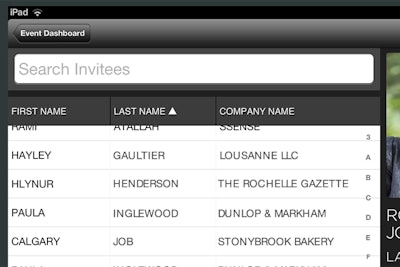
Events GPS is a system for managing invitations, registration, seating, check-in, and more that launched in August from the maker of Fashion GPS, a similar product targeted to the fashion industry. Events GPS has a Web-based platform and a mobile app. Check-in is managed with QR codes or R.F.I.D. chips embedded in physical invitations. Hosts can use the system to store contacts, including photos, and track which events people attended in the past, where they were seated, and other details. After the event, Events GPS can generate reports on attendee engagement.
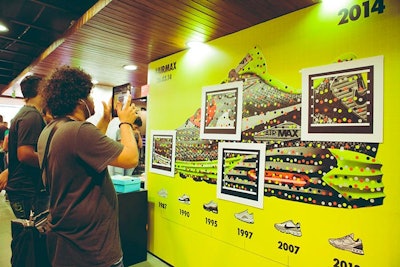
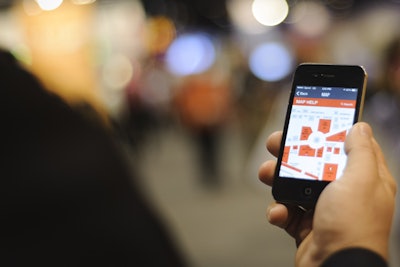
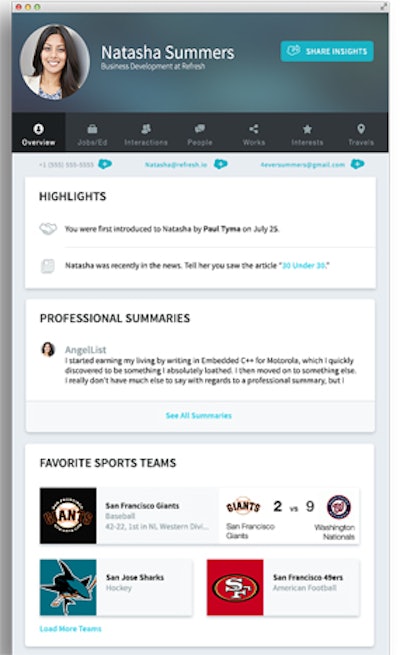
Planners interact with dozens of people—vendors, speakers, sponsors, and others—in the months leading up to an event. Refresh is a Web and mobile app that provides background information on people before a meeting to facilitate better engagement. Users link their calendars to the app and then the system searches public information from more than 100 sources around the Web, including Twitter, LinkedIn, Facebook, Yelp, and Instagram, about people they will be meeting. Users receive insights such as shared interests, work history, and recent blog posts. The system can also be used to store notes about people after a meeting.
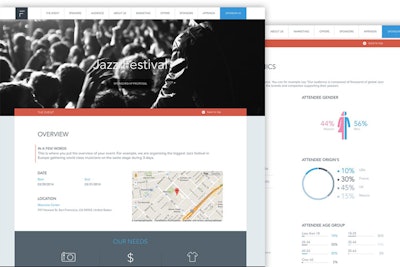
Sponseasy allows planners to create professional sponsorship proposals in minutes. Organizers input information about the event, demographic information about the audience, and the various options for sponsorships. The look of the proposal can also be customized with pictures, colors, and effects. Planners distribute the proposal to potential sponsors by sharing a link. During the campaign, planners can track activity through the system’s online dashboard. In July the company announced a partnership with Eventbrite to allow them to import their event information. The system is currently free to use in beta.
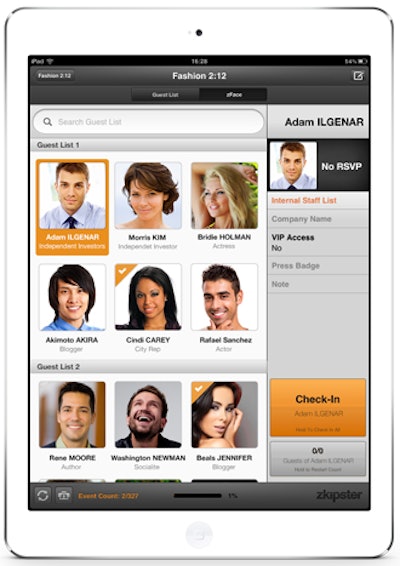
Zkipster is an app to manage check-in at non-ticketed events. In 2014 the company added several optional tools. Zface creates a photo-based guest list by searching the Internet for each guest name and pulling as many as 10 photo suggestions. Planners also can manually upload photos. The pictures are stored in a secure Zkipster account so they can be accessed for future events. Zsocial allows hosts to identify and connect with social media influencers at their event by integrating Twitter and Instagram handles into the guest list. As guests check in, the system can send them an automated welcome message that provides the event hashtag. After the event, Zsocial allows hosts to monitor and pull reports on social media interactions regarding their event. Zprint provides instant printing of name tags by connecting the app to a wireless printer.
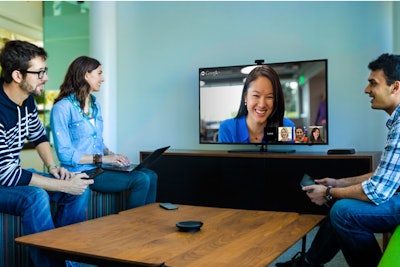
Google Chromebox for Meetings is a videoconferencing system based on Google Hangout technology. Hardware includes a Chromebox unit from either Asus, HP, or Dell, a high-definition camera, a combined microphone and speaker unit, and a remote control. As many as 15 participants can join the video meeting from other conference rooms or their laptops, tablets, or smartphones. One click of the remote starts the meeting without the need for access codes. The system is integrated with Google Apps, so invitations can be sent directly through Google Calendar. The system starts at $999.
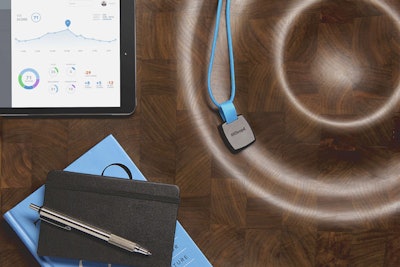
Loopd is a system that uses Bluetooth low-energy beacons to provide a variety of location-tracking tools for planners and attendees. Beacons placed around the event communicate with chips the attendees wear on a lanyard. As guests visit exhibitor booths, attend education sessions, and meet other attendees, the system tracks those movements and saves the information. At any time, guests can log into the Loopd app to see a history of those interactions, as well as receive marketing materials from exhibitors they visited. Booth staff also receive traffic information and can follow up with attendees. For networking, users can tap their badges together to share their contact information; otherwise, the system will automatically collect data when two people are standing near each other for a predetermined amount of time. Planners receive real-time information about traffic flow and also data regarding retention, engagement, dwell time, and amount of connections made for attendees and exhibitors. The company plans to release an update in February.
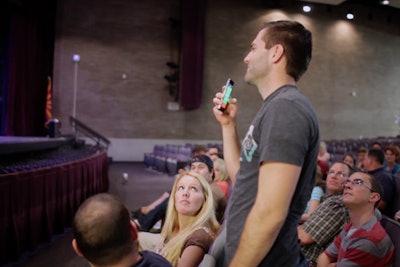
Crowd Mics turns guests’ smartphones and tablets into wireless microphones, so they can be heard over the sound system in a meeting room or auditorium. Guests download the Crowd Mics app and enter a code to join the event. When they want to ask a question or make a comment, they tap their phones, and the presenter will see a list of people requesting to speak in the order they came online. The presenter can enable an individual microphone, mute a microphone, or put the system in “open mic” mode so anyone can comment. Audience members can also submit text comments to the presenter through the Crowd Mics app, and the system offers polling functions.
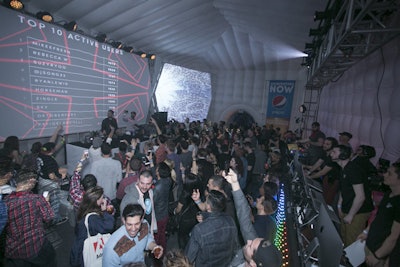
Lightwave has created sensor-equipped wristbands that measure the wearer’s biometric data, such as movement and body temperature. The technology debuted at a Pepsi-sponsored music event at South by Southwest in March. The data is transmitted wirelessly to the Lightwave system, which allows organizers to make adjustments in real-time. “For example, we thought the lighting and projections would be very engaging, but actually the environment was too bright. So when we noticed the accelerometer readings were not where we wanted them to be, we dimmed the lights and suddenly people started dancing more,” said Rana June, Lightwave founder and C.E.O. After an event, Lightwave provides data such as which moments got the most reaction from attendees or those that caused a lull in the room. Hosts also can choose to send guests their personal data to share on social networks.
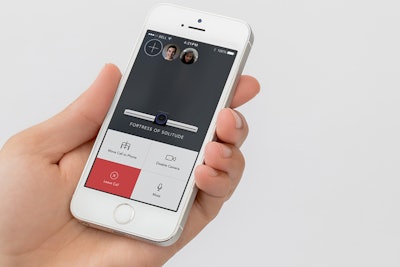
Highfive is new video conferencing system from two former Google engineers. For $799, users get a sleek device that can sit on top of a television or mount to a wall and includes a video camera, microphone array, and HDMI and Ethernet connections to connect to the Highfive online system. Users initiate a video call through the system’s app or browser and send the URL to as many as 10 other participants. Using Bluetooth low energy, the system recognizes if participants are in a room with a Highfive device and then, by swiping across their smartphone screen, the video transfers to the television in the room—without cables. The system also automatically displays video of the person talking.
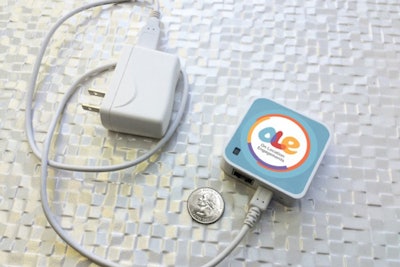
On Location Engagements is a location-based content delivery system for events. Beacons placed throughout a venue “wake up” smartphone screens when attendees are within a designated range, which can be anywhere from 5 to 30 feet. Planners determine what content is transmitted by each beacon, such as maps, videos, surveys, product information, or sponsor materials. Planners also can turn certain beacons on or off to guide an attendee through an event based on that person's job title, marketing objectives, or other goals. Attendees can create their own tour based on what interests them most by entering key words. When a tour is selected, only the beaconed zones associated with that tour would appear on the map. After the event, planners receive data such interactions per beacon, length of stay at each beacon, and traffic patterns at the venue.
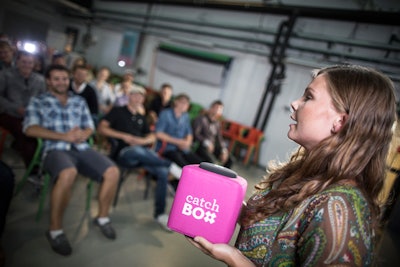
Catchbox is a wireless microphone to pass—or even throw—among speakers or audience members. The device consists of a microphone capsule secured with a magnet inside a soft, colorful cube. Catchbox communicates with an included receiver that can be connected to any sound system. To avoid unwanted noises, internal sensors mute the microphone when the cube is in motion. The company has two products: Catchbox 2.4 for groups of as many as 100 people no more than 100 feet apart and Cathbox Pro for an unlimited number of people within a range of 1,000 feet.
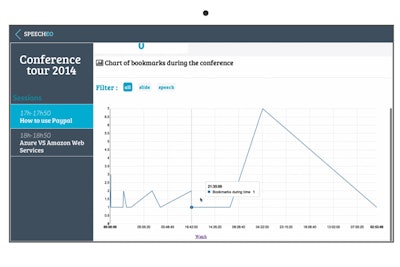
Speecheo is a new online tool for presentations designed to make it easy for audience members to take notes and also reveal to speakers and planners the most popular parts of their presentations. Attendees can view presentation slides and materials on their mobile devices and take notes alongside them. They can also capture audio and create bookmarks, so after the presentation they can review specific parts and share them on social media. Speakers and planners receive detailed analytics regarding which parts of the presentation were the most captured and shared. The system is currently in beta testing. The company expects to launch the public version in January.
